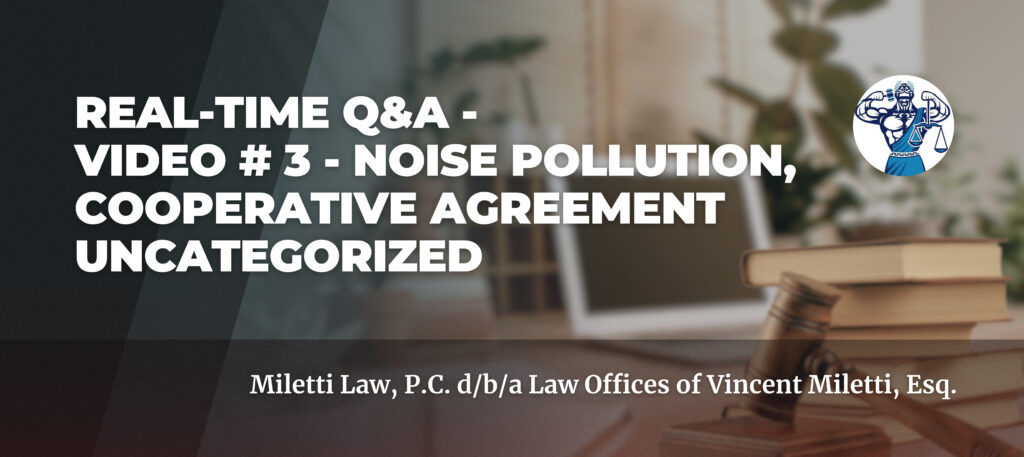Here at the Law Office of Vincent Miletti, Esq. and the home of the #UnusuallyMotivated movement, we take pride as a resilient and dependable legal services firm, providing such services in both a traditional and online, web-based environment. With mastered specialization in areas such as Employment and Labor Law, Intellectual Property (IP) (trademark, copyright, patent), Entertainment Law, and e-Commerce (Supply Chain, Distribution, Fulfillment, Standard Legal & Regulatory), we provide a range of legal services including, but not limited to traditional legal representation (litigation, mediation, arbitration, opinion letters, and advisory), non-litigated business legal representation and legal counsel, and unique, online legal services such as smart forms, mobile training, legal marketing, and development.
Still, here at Miletti Law®, we feel obligated to enlighten, educate, and create awareness about how these issues and many others affect our unusually motivated® readers and/or their businesses. Accordingly, to achieve this goal, we have committed ourselves to create authoritative, trustworthy, & distinctive content. Usually, this content is featured as videos posted on our YouTube Channel https://www.youtube.com/channel/UCtvUryqkkMAJLwrLu2BBt6w and blogs that are published on our website WWW.MILETTILAW.COM. With that, the ball is in your court and you have an effortless obligation to subscribe to the channel and sign up for the Newsletter on the website, which encompasses the best way to ensure that you stay in the loop and feel the positive impact of the knowledge bombs that we drop here!
As the authoritative force in Employment Law, it only seemed right to introduce one of the many upcoming series where we remain persistent in introducing a variety of topics, which will look to not only educate but also deliver in a sense that only Miletti Law® can. In this regard, this blog is Part IX of our ongoing series on the “Fundamentals of Trademarks,” where a number of continuing blogs have been dedicated to exploring trademarks in detail & depth. In Part VIII, we hammered on “Trademark Ownership and Rights in the United States” and mentioned that the actual use of a mark in commerce comprises the criteria used to give and obtain trademark rights. This is specific to being the first to use a given mark in association with or on specific product(s), good(s), and/or service(s) in the marketplace. To move this discussion forward, we have now switched gears and explored “The Proper Use of Trademark,” which is another key area of trademarks.
The Proper Use of Trademark
The strength of a mark and its distinctiveness are maintained and preserved through the proper use of the trademark. In fact, the loss of a mark is also prevented through such proper use. Under the trademark law, proper use of a trademark entails:
- Visual Distinction – a mark can be visually distinguished from any surrounding texts by using a different typeface or font, placing the term(s) in quotes, and/or capitalizing the first letter. This is essential in proper usage since it enhances the strength of the trademark.
- Consistency– the trademark law requires marks to be used accurately and consistently as part of proper use. Any inaccurate and/or inconsistencies in use could sabotage the strength of the mark when it comes to helping identify the source of a good, service, or product.
- Proper Adjectives – as it pertains to word marks, adjectives modifying nouns should be used for trademarks. Perfect examples include NIKE clothing and KLEENEX tissue. Under the trademark law, trademarks should not be used as verbs or nouns. Implying that they do not function as a trademark(s), nouns identify the actual good(s), product(s), or service(s) instead of the source of the same. Similarly, since they do not identify the source of the good(s), product(s), or service(s), verbs describe actions.
- Notice– although not required, incorporating proper designations when using a trademark is considered a good practice. For instance, federally registered trademarks use the letter R as a superscript in a circle as in ®. Elsewhere, the designations “SM” (service mark) and “TM” (trademark) are used if the mark is not federally registered. While it implies that adopting such a confusingly similar mark is prohibited under the trademark law, using such designations helps notify third parties that the mark is already under ownership.
- No possessiveness or plurals – as mentioned above, trademarks should not be used as adjectives. It, therefore, goes without saying that trademarks should not be used in the plural or possessive form since adjectives do not take the plural or possessive form. However, the law allows a few exceptions, such as MCDONALD’S, where the mark itself is possessive or plural.
In the next blog and Part X of the series, we shall move the discussion forward by hammering on “The Loss of Trademark Rights Under the Trademark Law.”
Stay tuned for more legal guidance, training, and education. In the interim, if there are any questions or comments, please let us know at the Contact Us page!
Always rising above the bar,
Isaac T.,
Legal Writer & Author.
 Professional Legal & Business Services And Representation - English & Espanol!
Professional Legal & Business Services And Representation - English & Espanol!

 314-648-2586
314-648-2586 CALL US NOW
CALL US NOW







